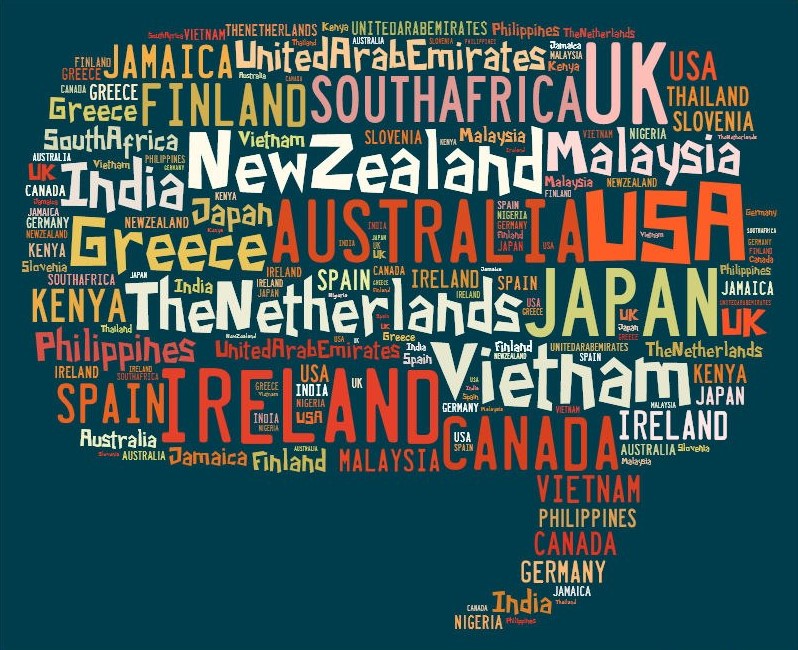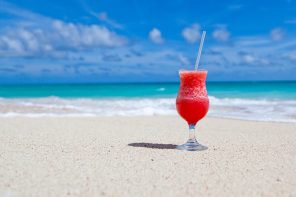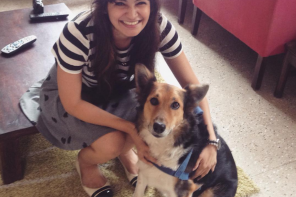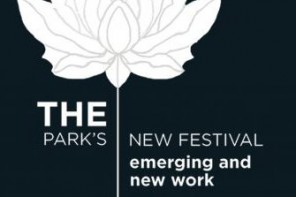Name all forms of poems that you know of! Sonnets, epics, ballads, odes? Do you know where they originated? What about other lesser known traditional poetic forms, say, Chashtushka, the traditional form of poetry of Russia? Or Pathya Vat from Cambodia? Viators of Canada or Minnesangs of Germany? April, International Poetry Month, ends today and we thought we’d mark the end with an interesting (and informative) bang! TYS brings to you the different forms of traditional poems of various countries. Read on to embark on a poetic journey across the globe!
1. JAPAN
The first that would probably come to your mind when you think of traditional Japanese poetry is a haiku but there’s way more to Japan and its poems than that. The Land of the Rising Sun has several traditional forms of poetry : Haiku, Dodoitsu, Renga, Shichigon-zekku, Senryu and Waka. Senryu and haiku may be the most popular forms of Japanese poetry internationally, but the most traditional has to be Waka.
Waka, when translated from Japanese, simply means Japanese poem (we love how Japanese can be such a no-frill language). The word was coined to differentiate it from kanshi, Chinese poetry or poetry composed in the Chinese language by Japanese. The two main forms of waka were tanka, which means a short poem, and choka, that is, long poem. However, choka fell out of use soon and therefore, waka and tanka were eventually used interchangeably.
In the Heien period (794-1185), wakas were used extensively and almost came around to being a form of communication – they were used between lovers, writers would exchange waka instead of words and they were also used widely in aristocratic settings.
Image courtesy – Masaharu Fujikawa
2. CAMBODIA
Most don’t know much about Cambodia (apart from the Angkor Wat) and maybe even lesser about its literature, but worry not! The Cambodian style of poetry, Pathya Vat, has to be one of the simplest forms to understand. It basically consists of four lines, where the second and third line must rhyme. In case the poem has more than one verse, the last line of the first stanza and the second and third lines of the next must rhyme.
However, recitation and singing of the pathya vat is very important, as they are meant to be read aloud. They can be recited in many styles, which include anger (kamhoeung) and grief (tumnuonh).
A great example is Bookworms by Simon McGurk.
Searching amongst
these dusty piles
of books, he smiles
and picks a few
To curl up with
while coffee brews
content to lose
himself in lands
Where dragons roar
heroes still stand
with sword in hand
to save the world
Source – AllPoetry
3. VIETNAM
Lục Bát is a Vietnamese verse form, which, when translated, means “Six eight”. The name pretty much contains the rhyme scheme of the poem, which is:
^^^^^A
^^^^^A^B
^^^^^B
^^^^^B^C
^^^^^C
^^^^^C^D
^^^^^D
^^^^^D^E
As is evident, it has lines of six syllables which alternate with lines of eight syllables. The sixth syllable of the six-syllable line rhymes with the sixth syllable of the eight-syllable line after it. Similarly, the eighth syllable of the eight-syllable line matches the sixth syllable of the six-syllable line before it. They don’t have a specific word or line limit, and Lục Báts can be as long as thousands of lines.
4. INDIA
India, the country known for its richness in culture and history, naturally has several forms of traditional poetry in the many, many languages that are spoken in the nation. One of the most famous, however, is epic poetry, which formed much of the base of Hinduism. The Mahabharata is known to be the longest poem ever written, with over 200,000 lines (from over 100,000 couplets). The Ramayana and the Mahabharata, both epic poems, are the two greatest works of Indian literature to have ever been produced.
Image courtesy – Fickwhreligionsmuseum
The first epic that was written in Hindi was the Raamcharitmaanas, based on the Ramayana, written by Tulsidas. There are also several epics written in Tamil, including Cilappatikaram, Manimegalai and Valayapati.
When talking about the Tamil language, it is imperative to mention Kural, an important form of Tamil traditional poetry. This is a very, very short poetic form; it consists of only two lines – 4 words in the first and 3 words in the next. But no, it isn’t as easy as it sounds. In fact, it’s hard to find these days because of the difficult structure of these poems!
5. RUSSIA
Chastushka, one of the forms of traditional Russian poetry, is a quatrain wand follows the rhyme scheme ABCB, ABAB or AABB. They are humorous, satirical or ironical and are commonly accompanied with music – usually that of an accordion. Normally, many chastushki are sung one after the other and there is a small interval between each chastushka so the listeners can laugh without missing the words of the next one. So convenient!
Bylina, on the other hand, is a type of an epic poem, describing heroic deeds. In contrast to other epics that consist of thousands of lines, byliny are often stretch to only a few hundred ones. Bylina stems from the word “byl”, which basically means “a story of real events.” Although the bylina does not have a rhyming scheme and is written in free verse, a distinguishing rhythmic pattern is one of its primary characteristics.
6. LATVIA
Not many know that Riga, the capital of Latvia, was the European Capital of Culture in 2014 and even fewer know much about the beautiful country in eastern Europe. An integral part of any culture is poetry, and in the case of Latvia, it is the daina. It is a quatrain and can be about pretty much any aspect of life. It is similar to the haiku in its structure, but is noticeably less popular than its Japanese counterpart, primarily because of the number of Latvian speakers in the world, which is only around 2.5 million.
A beautiful daina is Episode by Judy Van Gorder:
Seizures rack her little body.
Sisters softly sing a love song,
Mommy gently rubs her tummy,
lulling home the cherished baby.
Source – Poetry Magnum Opus
7. ITALY
The influence of Italy on literature all over the world is tremendous, to put it mildly. It has produced some of the best writers a la Nicolas Machiavelli, Umberto Eco as well as Italy’s biggest literature export, the Petrarchan sonnet. Ballata, a form of Italian poetry and music, was used widely between the 13th and 15th centuries. It’s musical structure goes: ABBAA. The first and the last stanza have the same words, and longer ballate were constructed in the form ABBAABBAA. Francesco Landini was one of the most famous composers of ballate, along with Bartolino da Padova and Andrea de Firenze.
Image courtesy – Psychedelic Folk
Dodecasyllable and Hendecasyllable are two famous types of verses used widely in Italian poetry. Dodecasyllable (‘dodecasillabo’ in Italian) literally means ‘of twelve syllables’, and yes, this verse has 12 syllables. On the other hand, hendecasyllable (endecasillabo) means ‘Of 11 syllables’ and – take a guess, seriously, you can’t be wrong – it has exactly 11 syllables. The stress is on the second last, that is, the tenth syllable.
8. GERMANY
The German language, to most people, is brittle, harsh and anything but romantic. The images about the absence of delicacy, the videos mocking it… I can go on and on. So you’ll be super surprised to know about Minnesänge. Minnesang was a form of poetry and song that became very popular in the Middle High German era. It is sort of a German version of the French “courtly love”. The subject of these songs and poems was almost always love; the word stems from the “mine”, which is the Middle High German word for love. The people who sang these were known as Minnesänger (Sänger, in German, is singer).
Image courtesy – Web Gallery of Art
They mostly revolve around a knight trying to woo a lady, who often stood higher in the social and hierarchical pyramid of nobility. An example of a Minnesang, translated in English, is:
You are mine, I am yours,
Thereof you may be certain.
You’re locked away.
within my heart
Lost is the key
And you must ever be therein
Source – Wikipedia
Much like the pathya vat, the Minnesang was meant to be sung out loud and tone and melody were very important, most of which, unfortunately, have not survived the passage of time.
9. CANADA
Although it’s not exactly a pure traditional form of poetry of a particular country, viator was invented by Canadian author Robert Skelton, who was a British emigrant. It has a unique structure, in the sense that the poem can have any form of a stanza, but the first line of the first stanza should be the second line of the second stanza and so on. It ends when the last line of the poem is the same as the first line of the poem.
Poetry is something that can touch the minds and heart of all individuals. It is universal; it lies deep in the roots of all cultures, of all nations. Each culture is different yet beautiful, and the traditional forms of poetry of each culture should be spread, preserved, kept alive. The importance of literature and poetry in the history of a culture as well as a country cannot be undermined; they connect people and families, groups and societies, states and even nations.
Featured image courtesy – Artipeeps















